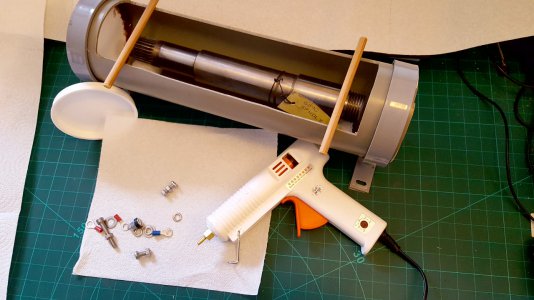@Rick_B Hi there
Have a look at another posting earlier today on this site
-->
https://www.hobby-machinist.com/threads/homemade-nickel-plating-with-coins.106191/
It is a great convenience to have a variable voltage settable supply, as used by electronics hobbyists. Especially those which can have a current limit which you set by giving it a short-circuit, and then setting the knob. You can then turn up the voltage until the current limits, add on a little, and leave it to carry on plating.
Putting a whole 12V from a supply capable of delivering a big current without collapsing (20A) made a big mess. You can "turn up the current" to some amps, say 2A to 4A or so, if you are de-rusting. For electroplating or anodizing, then much more finesse is required.
You are clearly into bigger stuff, and it may have much more area, in which case, by all means, use more current. You know you have gone too far if the bubbles are forming too intensely. A thing as big as a drill press column might be better tackled by the method mentioned by
@pontiac428. It's easier to say than to do. I used a big rag, and an old battery charger croc-clip, and I kept dunking it. I had used a little diluted battery acid to get the water conductive. This, by itself, somewhat cuts into the rust. I chose sulfuric over hydrochloric because I did not fancy chlorine gassing off. Also, stuff containing sulfur is not such a danger to the environment. You can pour it onto the ground.
To limit the amount of fluid I needed, even on the smaller parts I was involved with, I resorted to a plastic guttering down-pipe, with a wide slit cut along it's length big enough to admit the part. I blocked the ends with salvaged plastic ends as used on cardboard shipping tubes cut to fit, and glued on with hot-melt.
Here is a picture of a gash knocked up plating bath I tried back in 2021 to rust-proof a lathe spindle.



